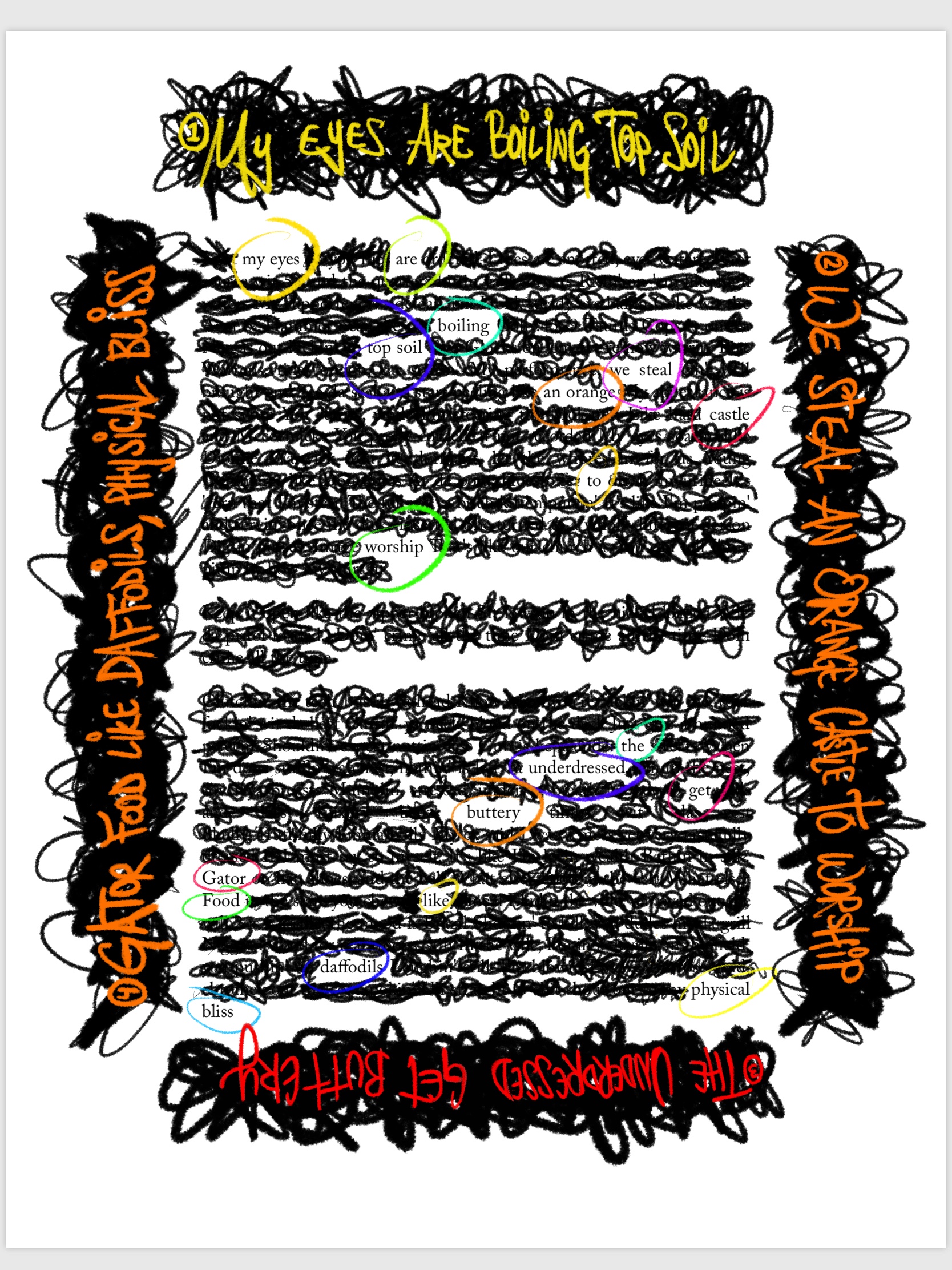POINTS OF ORIGIN
Nothing
at the beginning but
earmarked lips moving restless
liminal windows
sought dusk pulled tight danced circles
and loss
She suffered momentarily every detail
so small
washed over by the dark shade
of inevitability
She the Harbour
parent tree
drops seeds pushes deep into
the complexity
We are urgent. Producing simple waves
The hero of his next story
Source: Evelyn Juers’ House of Exile: The Lives and Times of Heinrich Mann and Nelly Kroeger-Mann.
Method & Some interesting Backstory: This book, chosen blithely from a library of thousands, held no apparent significance for me at the time. I was drawn to it, however, and opening to a page at random, I circled words that struck me. Though I began by using the words sequentially as they appeared, my word placement quickly became more deliberate as I followed the poem’s unfolding form. This “unfolding” is one of the things I love most about found poetry; from within the rich environment of a source text, it can feel, at times, as though the poem is finding you.
The mysterious “She,” who almost immediately took form struck a deep chord in me. “Who is this woman?” I wondered.
Years later, sifting through a beautiful old wooden chest of age-weathered letters, photographs, and other family history in my grandmother’s dining room, I came across a thin, wrought-metal icon of the Virgin Mary. I unwrapped it from its shroud of thin tissue paper, and with it, an origin story.
My Grandmother recounted the tale of our ancestor, Albert Hinrichs, who joined Napoleon’s invasion of Russia as a young man in 1812 and miraculously survived that winter’s infamous retreat, arriving home at death’s door with this icon clutched to his breast. Over the course of many months, he was nursed back to health by a young woman with whom he fell in love and soon married. His family, objecting to her lower social status, disapproved and asked him to end it. Forced to choose between love and his Swiss-German home, he chose love, and the young couple set out to build a new life in America.
I am struck by certain parallels between the stories of Albert Hinrichs and Heinrich Mann. I have since learned that Mann was also from a well-to-do German family and, to their dismay, also married a girl from “the wrong side of the tracks.” Both young couples left Europe for the States, seeking freedom from social or political circumstances. And in both of these stories of young German men, there is a woman. “Who was she?”
Framed by the male narrative, as our histories so often are, women seem frequently to appear as passive side characters. The enigmatic “She” of this poem serves to shift our collective perspective, perhaps sharing a glimpse of life through her lens, and refocusing on “Woman as Harbour” – the safe haven and source – from which all begins and ends.
Tragically, not long after her arrival in Los Angeles, Nelly Kroeger-Mann committed suicide. And sometime after their arrival in America, Albert and the nurse conceived. The nurse carried a life in her womb, and generations were born. Wave after wave of life and death – and all the simple moments in between – have rippled their way through time to me.
“Who is she?”
She is me and I am her. My point of origin.
Claire Frohman is a free spirit, world traveler, and food activist living in Bloomington, IN. She currently helps manage her mother’s catering company and works part-time at an immigration law office. Claire received her undergraduate degree in Sociology and Italian from Vassar College in Poughkeepsie, NY.
